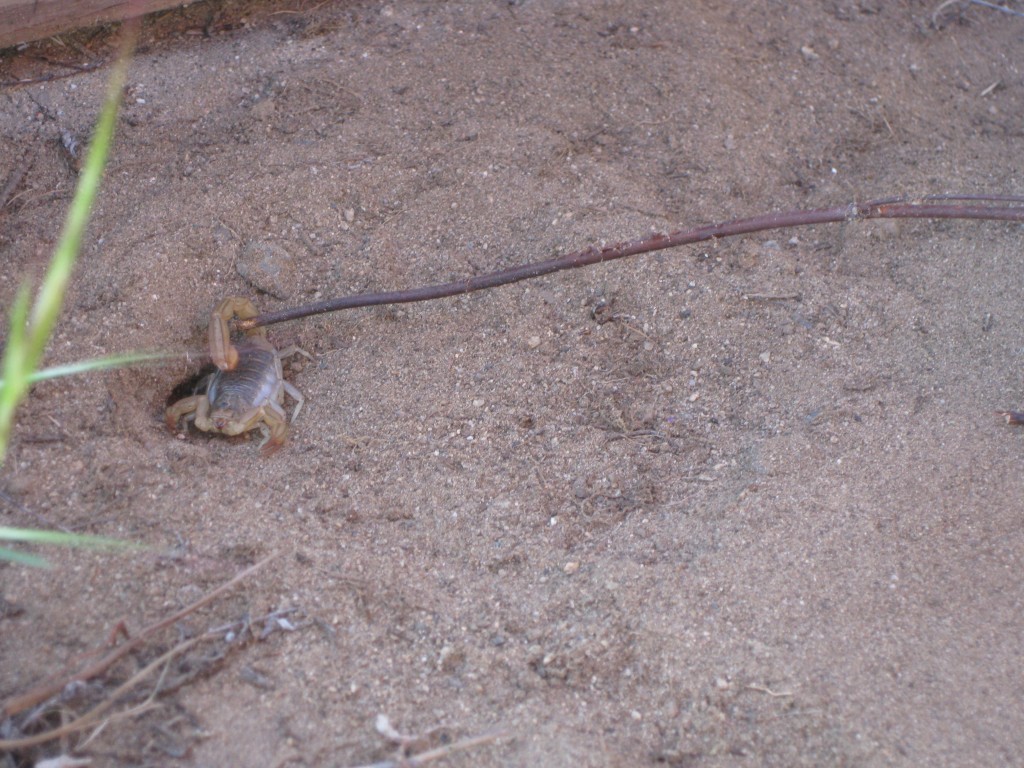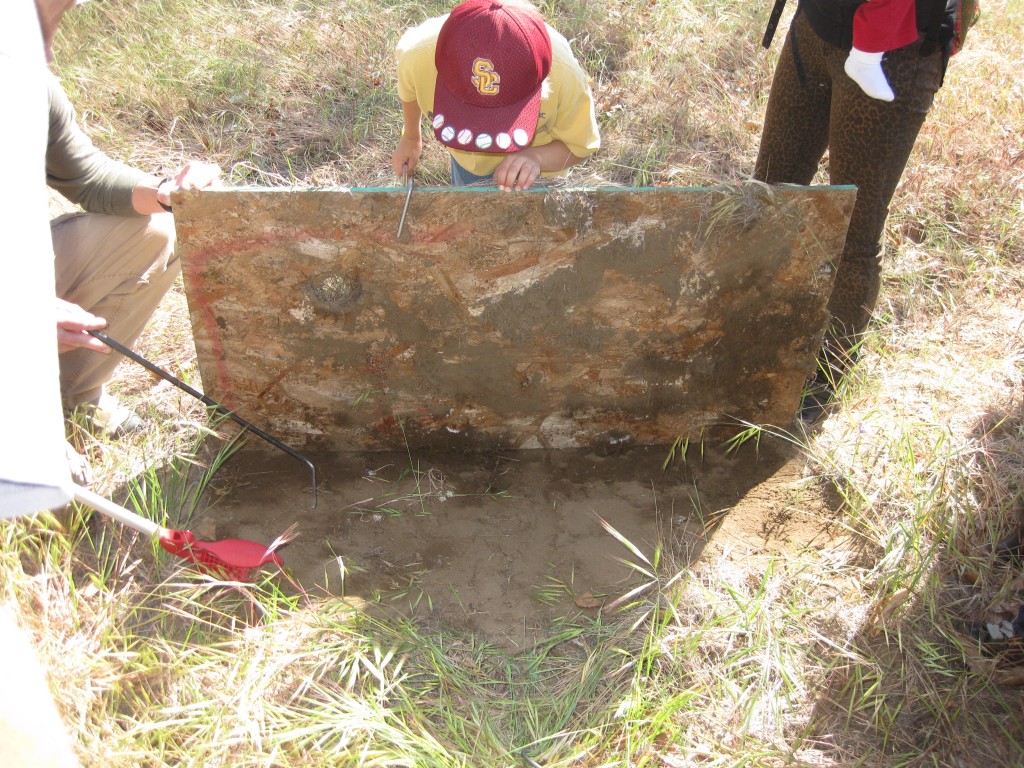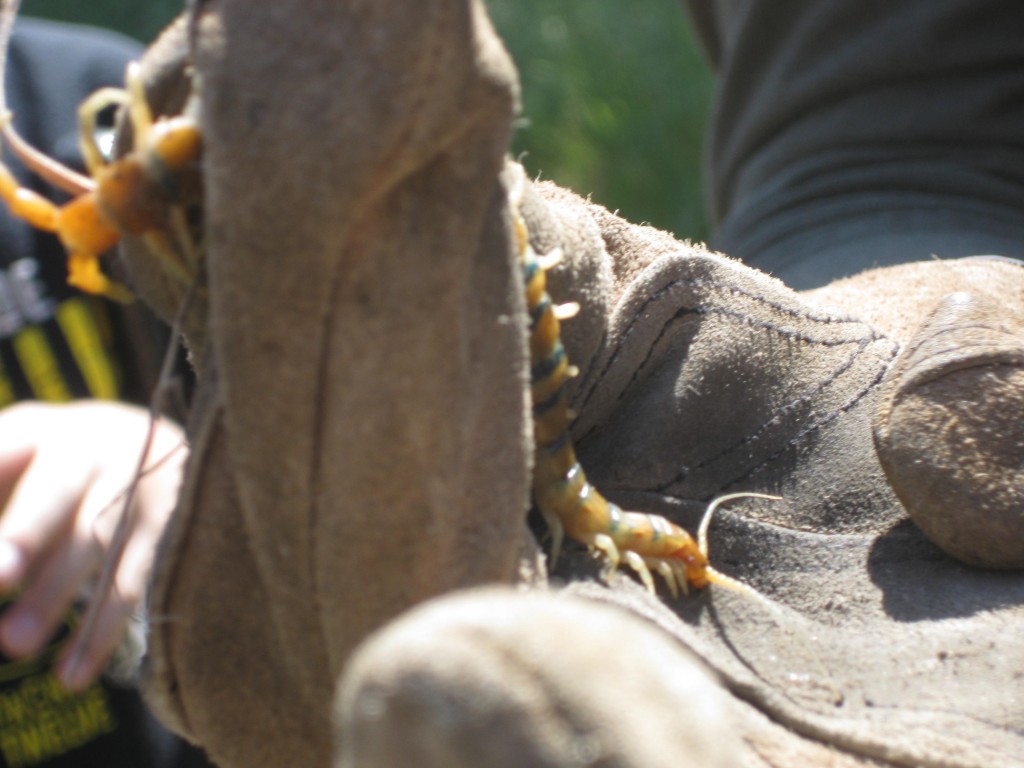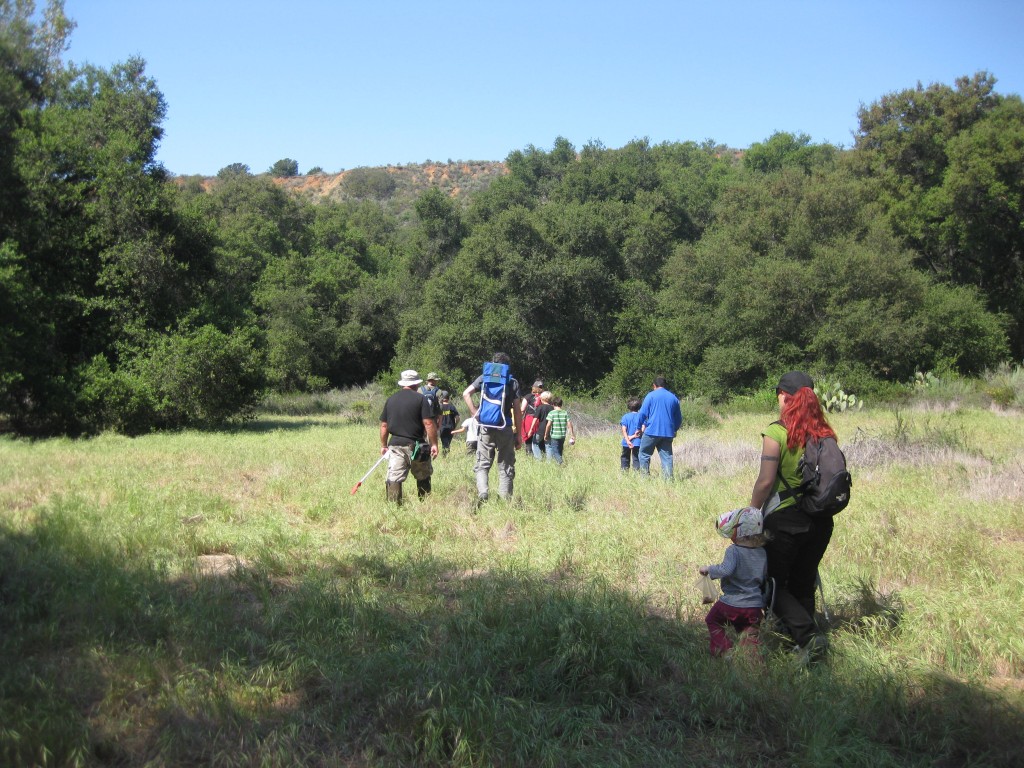
One of the more commonly seen types of scorpions. All glow under a black light, so night hunting can be especially productive ...and eerie.
Every morning this week, Christian has woken up asking if TODAY was the day we were going on a snake walk. Today, I finally got to say YES, TODAY IS THE SNAKE WALK! It was really easy to get Christian dressed and out of the house to drive up to Casper’s Wilderness Park where Steve Bledsoe (and friends) of Southwestern Field Herping Associates was going to lead a Herpetology Walk and Talk. (There are two free snake walks a month until the end of May. Check the Casper’s website for more details.)
We met Steve at Casper’s Adventure Day last week where he and his friends brought a dozen live specimens of snakes and reptiles commonly found in southern California. This included three rattlesnakes. This was a fantastic opportunity to really hunker down and get a close look at our backyard herps, as they were not in terrariums, but clear plastic boxes lined with sawdust.

Two of the boys loved lifting the boards. They, like the herpetologists, were wearing gaitors around their calves for protection and carried snake sticks.
These guys were a WEALTH OF INFORMATION, so I made sure to catch the snake walk this morning. And despite Steve’s warning that we were more likely to see centipedes and scorpions than snakes, we got to see three rattlesnakes after all. Plus skinks, centipedes, and scorpions.
There are some 60 boards laying in fields at Casper’s, specifically intended to create under-a-rock type places to attract reptiles. We walked along and carefully flipped these boards open, coming across squirrel grass stashes, invasive Argentinian ant colonies (which we did our best to disrupt), mouse nests, and all manner of beetles and bugs. The first skink we saw was a beautiful shimmery blue, which told us it was a juvenile, but it slipped away. The next one was not so fast and was promptly caught by one of the kids in the group. Unfortunately, in the passing from one hand to another, the skink lost its tail – which it will do intentionally to distract potential attackers. Believe me, I was distracted. I had no idea how much a detached tail would thrash back and forth. After a second skink lost its tail today, the adults did the holding of the creatures. The detached tails were collected and saved to feed pet snakes at home.
The first rattlesnake was a small Western Pacific. Steve says this is one of the more common snakes around. It was reddish, small, and coiled up under one of the early boards. Its angular triangular head was impossible to mistake for anything but a member of the pit viper family.
I only got a peek at the second snake which was slithering down a hole by the time I got there. The people who saw it said it had quite a large meal (read “lump”) moving down its body.
The third snake I only heard about, but Chad and Christian saw the evidence. Apparently the front half of the group on the trail came upon a young rattler trying to swallow a large mouse. The mouse got halfway down its throat before it thought the better of it and regurgitated it out. Chad and Christian had seen the dead mouse and had been confused why the back half of the mouse looked normal and the front half looked like it had been pulled through a narrow hoop and stretched!

If you look closely, you can see that this angry tiger centipede is biting the glove so forcefully that he is lifting the leather up. His poison is actually in his two curved stingers on his tail, like a scorpion.
Fascinating day. Thanks to the Southwestern Field Herping Volunteers! We’ll see you May 12 (unfortunately, the May 5 walk conflicts with the OC Waldorf School May Faire).

